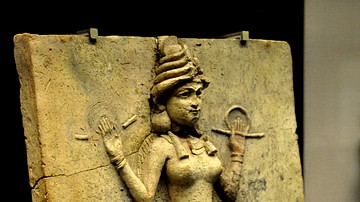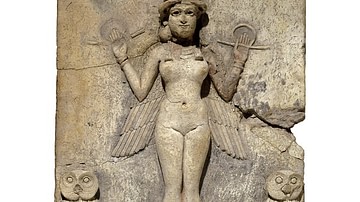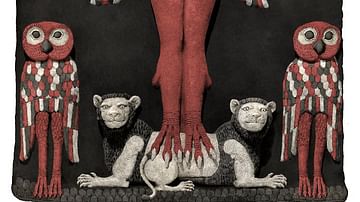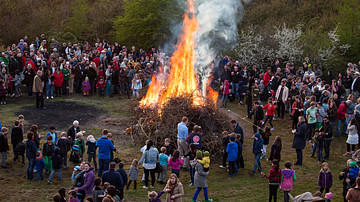Illustration
A detail from The Queen of the Night (also known as the `Burney Relief’) relief, a high relief terracotta plaque of baked clay, measuring 19.4 inches (49.5 cm) high, 14.5 inches (37 cm) wide, with a thickness of 1.8 inches (4.8 cm) depicting a naked winged woman flanked by owls and standing on the backs of two lions. It originated in southern Mesopotamia (modern day Iraq) most probably in Babylonia, during the reign of Hammurabi (1792-1750 BCE) as it shares qualities in craftsmanship and technique with the famous diorite stele of Hammurabi’s laws and also with the piece known as `The god of Ur’ from that same period. The woman depicted is acknowledged to be a goddess as she wears the horned headdress of a deity and holds the sacred rod-and-ring symbol in her raised hands. Who the winged woman is, however, has not been agreed upon though scholars generally believe her to be either Inanna (Ishtar), Lilith, or Ereshkigal. (The British Museum, London)
Cite This Work
APA Style
Fae, w. u. (2014, February 19). Queen of the Night Detail. World History Encyclopedia. Retrieved from https://www.worldhistory.org/image/2315/queen-of-the-night-detail/
Chicago Style
Fae, wikipedia user:. "Queen of the Night Detail." World History Encyclopedia. Last modified February 19, 2014. https://www.worldhistory.org/image/2315/queen-of-the-night-detail/.
MLA Style
Fae, wikipedia user:. "Queen of the Night Detail." World History Encyclopedia. World History Encyclopedia, 19 Feb 2014. Web. 16 May 2024.







